The Conscious Couturier: Thai Textiles Shape Sustainable Fashion
The Conscious Couturier: Thai Textiles Shape Sustainable Fashion
วันที่นำเข้าข้อมูล 12 Jan 2022
วันที่ปรับปรุงข้อมูล 29 Nov 2022
The Conscious Couturier: Thai Textiles Shape Sustainable Fashion
The fashion industry had been known for its overconsumption, mass production, and along with it, major greenhouse emissions. However, this is not the reality of Thai textile producers like Tohsang.
Tohsang Cotton Village is a women-led cotton textile producer and learning center in Kongchiam, Ubon Ratchathani. The Village grows cotton, padauk trees, and indigos as part of an environmentally friendly and sustainable production of textile products.
From the use of rice water (or sao khao) to prime cotton threads before looming to the natural gradient weaving of white-brown ombre cotton, the Village brings life to the traditional and environmental wisdom of Thai textile production.
Fashion as climate action was never a farfetched concept for northeastern Thai weavers in the Kongchiam community. After speaking with the Village’s founder, Prairie Yooprasert, I cannot help but wonder what Thai textiles hold for the future of slow and sustainable fashion.
Threading sustainability into fashion

The fashion industry is currently one of the world’s largest polluters and contributors to global greenhouse gas emissions. The fast fashion supply chain faced major challenges and disruption during the pandemic, placing millions out of jobs. It is now time to rework the foundations fashion is circulated and built upon.
Since its founding, Tohsang Cotton Village has collaborated with eco-luxury UK fashion brand Rare and Fair, Thai research- and fieldwork-based design platform Seire, and digital fashion week celebrating Southeast Asia weaving communities and textiles TENUN to produce culturally-packed yet contemporary, slow, and sustainable fashion pieces.
The premier of its fashion collection debut at TENUN Fashion Week in October 2021 has been met with enthusiasm from fashion-goers and environmentalists alike, securing its place as the winner of TENUN’s Best Collection Award. You can check out their collection at the TENUN YouTube Channel.
Thai textile production encourages slow and sustainable fashion, since the traditional wisdom of local communities employ natural and plant-based ingredients in the making of textiles, prioritizing natural development of resource cultivation grounds over mass production.
Production of Thai textiles
Traditional Thai textile production builds upon generational wisdom. The following methods have survived through the generations of local weavers in northeastern Thailand, unique to the region and community. Unlike the fast fashion production of replicating styles with synthetic fabric, not one Thai textile is the same. Beyond region-specific traditional patterns on Thai textiles, each thread hand-soaked in rice water and hand-dyed in natural pigments encapsulates the stories of different locals contributing to their collective cultural narrative.
Cultivation & harvesting
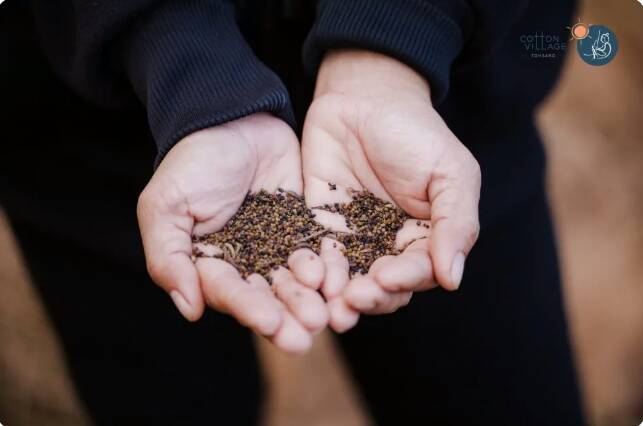
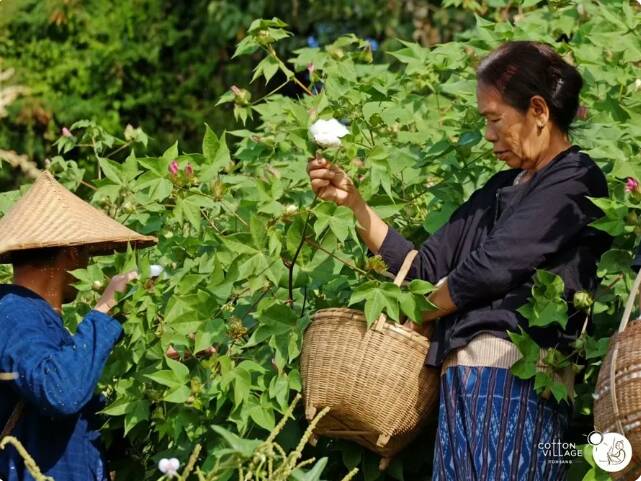
In the months of October and November, planting begins. Prairie and other Village locals had just recently planted cotton and indigo seeds by the banks of the Mekong River through natural farming. Instead of using fertilizers and pesticides, they rely on the Mekong for enriching soil with nutrients, as well as the local biodiversity to serve as a small ecosystem and create favorable conditions for their seeds to grow—all thanks to nature.
Their homegrown cotton and indigo would flourish in February and March, to be harvested and cultivated into natural cotton textile and dye. The process of planting, farming, and harvesting is done annually without any disruptions, because the Village’s farmland has developed naturally and thus is more resilient than other kinds of farms, where unnatural modifications to the land create major changes to the local ecosystem.
Spinning & weaving
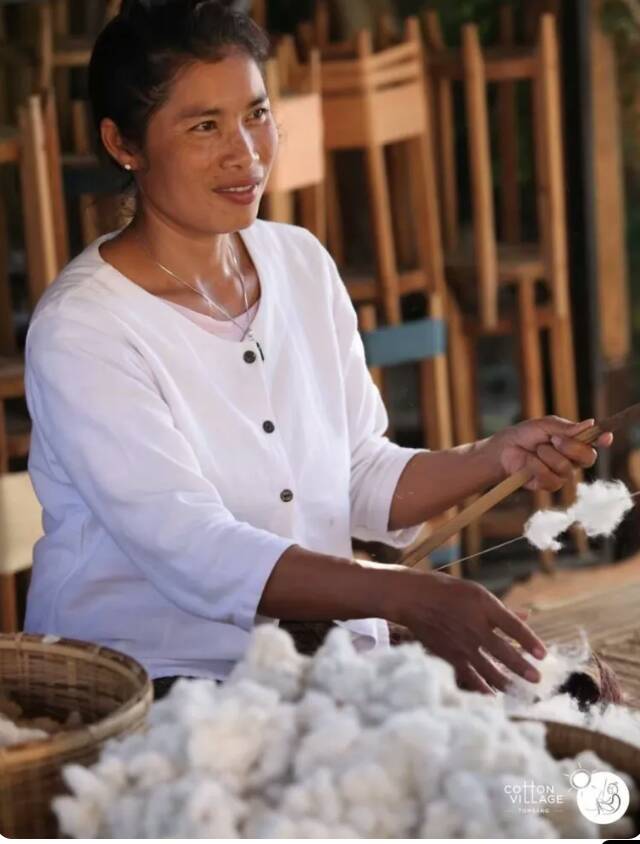
Yarn preparation process. Source: Tohsang Cotton Village.
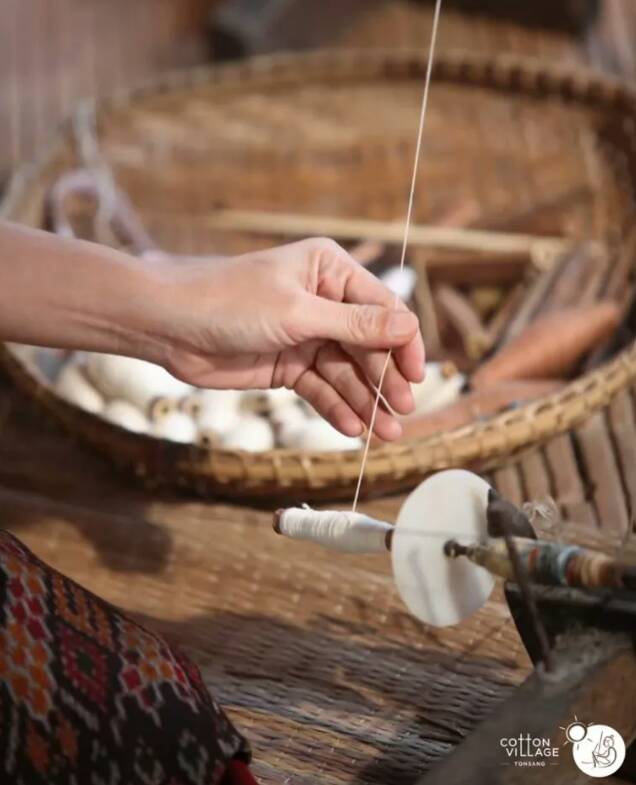
The harvested cotton is then handspun into yarn and strengthened into warp; a basic component used along with weft to turn yarn into fabric for weaving and embroidery.
At Tohsang, the skilled grandma Som Kiang hits and soaks the yarn overnight in water. This process is repeated the following day, with a boiled mixture of milled and sticky rice. This preparation requires at least three days to complete.
Kongchiam weavers then proceed with weaving the prepared warp and weft into textile on the loom, where traditional patterns such as chok dok are created.
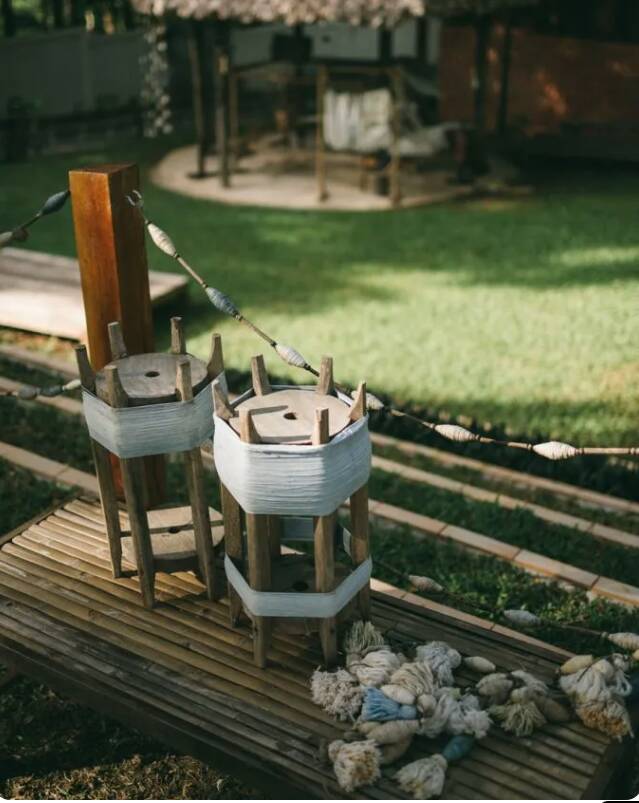
Prepared handspun yarn. Source: Tohsang Cotton Village.
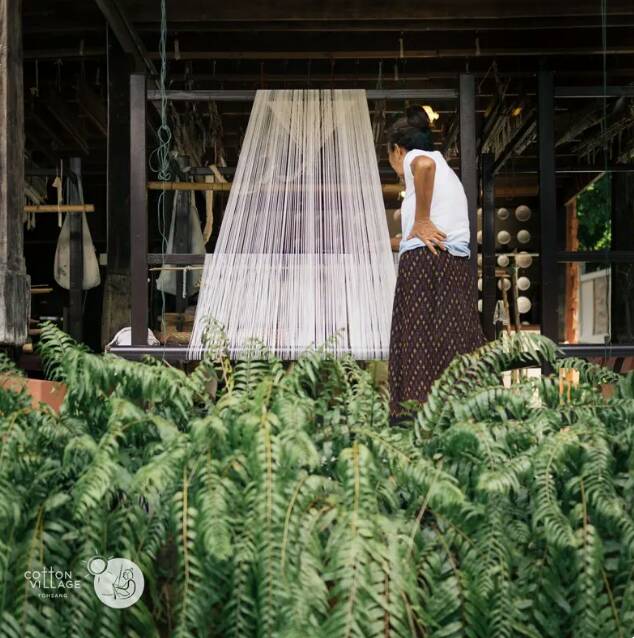
Natural dyeing

Foraging padauk. Source: Tohsang Cotton Village.
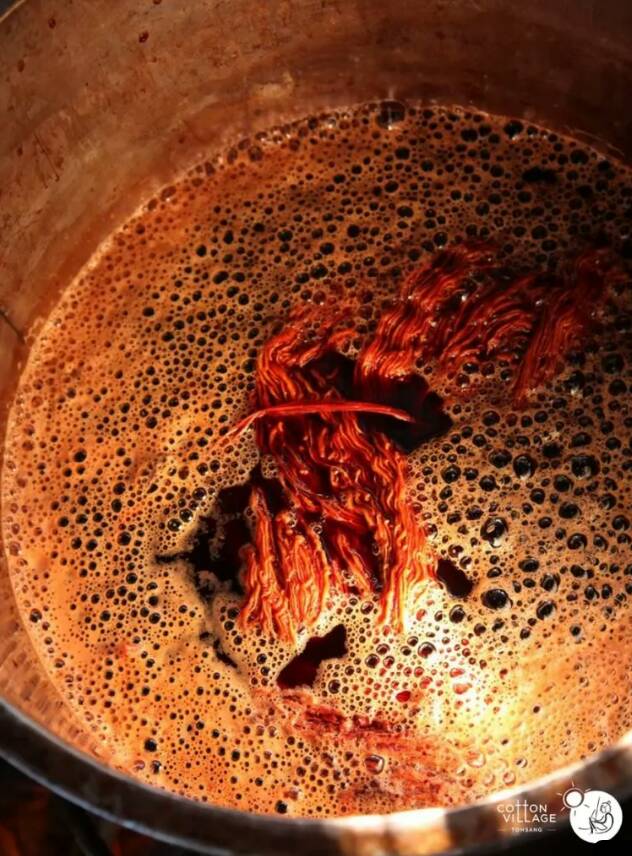
The cotton-dyeing process takes about four days and involves the fermentation of indigo paste in large vats. Once the dyes are ready, the indigo flowers are removed and reused in the next dye process along with foraged tamarind to serve as a natural indigo reduction ingredient to remove excess oxygen.

Prairie has just experimented with a plant-based rainbow dye palette, using padauk bark, mango, lac, myrobalan, and indigo she had foraged from near the Village; these natural ingredients are well known in traditional dye culture of Kongchiam.
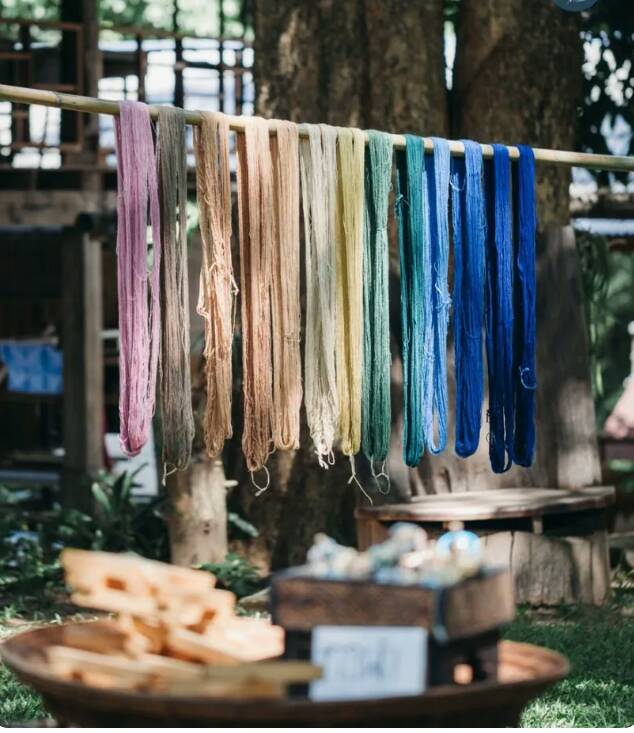
In harvests where cotton is naturally brown due to the change in water levels of the Mekong River, which alters the mixture of mud and soil in the plantation area, the dyed yarn appears warmer and darker.
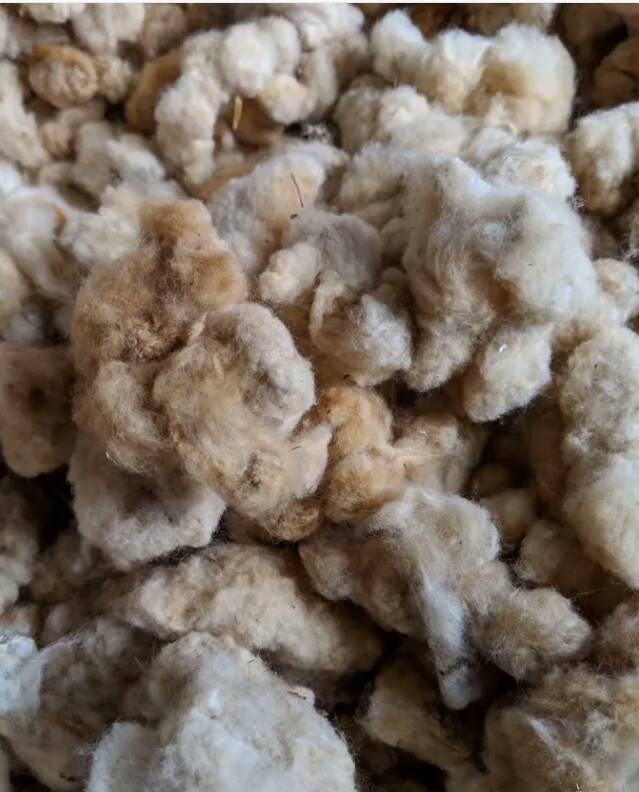
Environmental & social impact of sustainable textiles
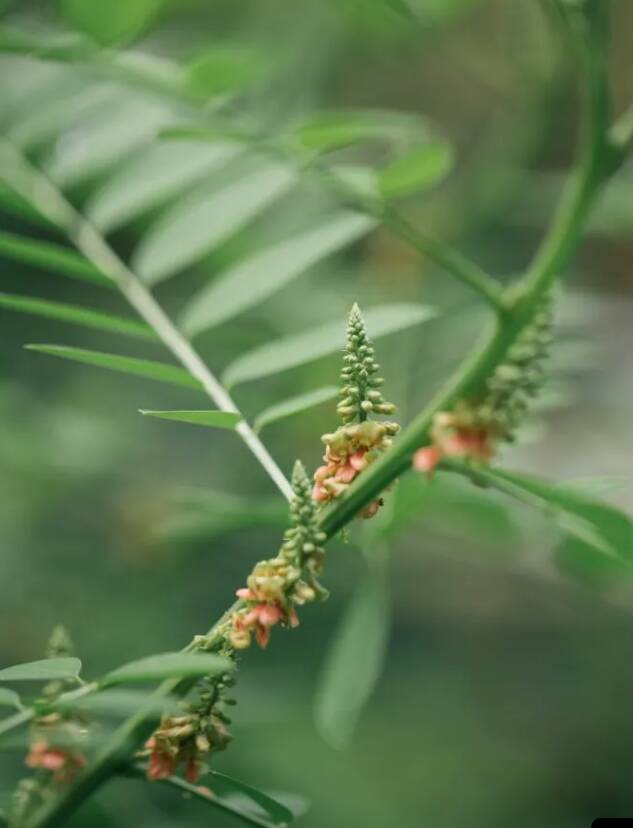
Not only does Tohsang Cotton Village’s production process leave a virtually neutral environmental footprint, the Village’s commitment to the Sustainable Development Goals further contributes to its growth and resiliency.
Tohsang Cotton Village improves the lives of low-income women in the Kongchiam community by providing them with additional streams of income; this tackles Goal 1: No Poverty. Moreover, the Village seeks to empower local women, not only through employment, but the conservation of their local heritage and culture. With over 95% of staff being women, the Village tackles Goal 5: Gender Equality.
To avoid undercutting prices in the Thai textile industry, the Village encourages fair wages through a sustainable business model that does not value profit over people and includes the voices of the local community in decision-making processes—this tackles Goal 10: Reduced Inequalities.
Tohsang Cotton Village responsibly grows natural cotton and dye through local manpower within the community without outsourcing labor. This empowers the local community to grow in tandem with the environment, tackling Goal 12: Responsible Consumption and Production.
And finally, by prioritizing the terrestrial and freshwater ecosystems of the Mekong via natural farming, the Village tackes Goal 13: Climate Action.
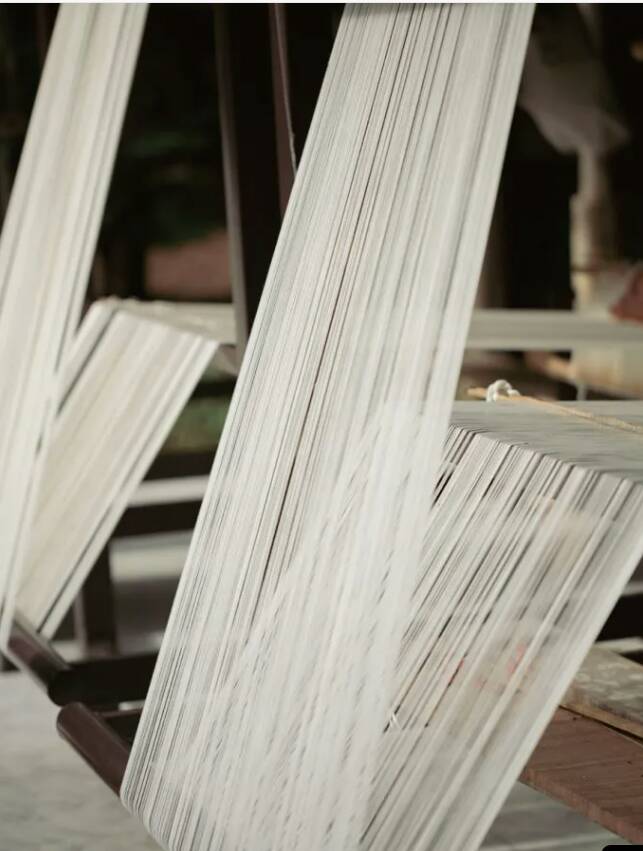
The recent Intergovernmental Panel on Climate Change (IPCC) Report 2021 has shed light on alarming sea level rise, frequent extreme weather, and worsening drought, impacting even resilient agricultural communities like Tohsang.
Because human influence alone is responsible for the warming of climate at an unprecedented rate, the Village aims to minimize human influence on its cotton production as much as possible. These natural farming practices can serve as a starting point.
Climate action through traditional wisdom
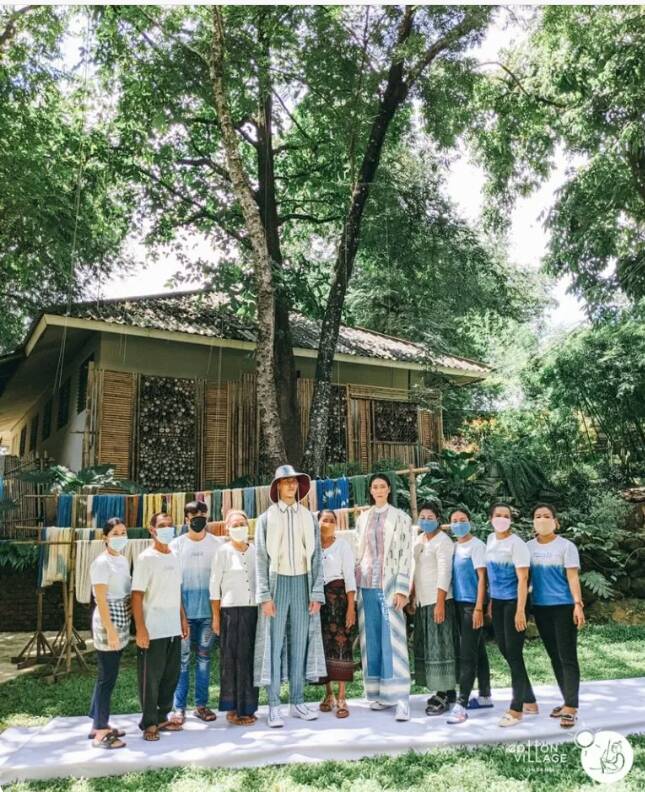
Undeniably, the industry’s commitment to climate action is crucial, not only to the habitability of our planet, but also the wellbeing of our people. What fashion brands can learn from slow and sustainable Thai textile production is how the traditional ingenuity of local foraging and natural farming can strengthen the immediate ecosystem, reduce the need for transportation, and uplift local communities.
Thai textiles show that we can contribute meaningfully to climate action by tapping into the wisdom of our local heritage. To learn more about Thai textiles, you can visit the Queen Sirikit Museum of Textiles, the Kalm Village, and the Jim Thomp
สถานเอกอัครราชทูต ณ กรุงเตหะราน
Office Hours: Sunday to Thursday, 08:30-12:00 and 13:00-16:30 (Except public holidays)